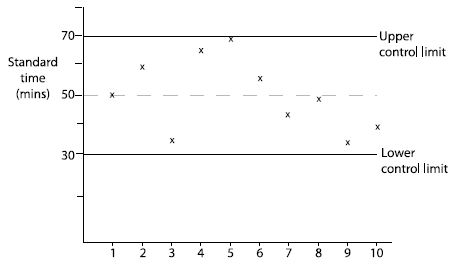Variance Investigation
Investigating variances is a key step in using variance analysis as part of performance management.
When should a variance be investigated - factors to consider
Size
A standard is an average expected cost and therefore small variations between the actual and the standard are bound to occur. These are uncontrollable variances and should not be investigated.
In addition, a business may decide to only investigate variances above a certain amount. The following techniques could be used:
- Fixed size of variance, e.g. investigate all variances over $5,000
- Fixed percentage rule, e.g. investigate all variances over 10% of the budget
- Statistical decision rule, e.g. investigate all variances of which there is a likelihood of less than 5% that it could have arisen randomly.
Favourable or adverse
Firms often treat adverse variances as more important than favourable and therefore any investigation may concentrate on these adverse variances.
Cost
For investigation to be worthwhile, the cost of investigation must be less than the benefits of correcting the cause of the variance.
Past pattern
Variances should be monitored for a number of periods in order to identify any trends in the variances. A firm would focus its investigation on any steadily worsening trends.
The budget
The budget may be unreliable or unrealistic. Therefore, the variances would be uncontrollable and call for a change in the budget or an improvement in the budgeting process, not an investigation of the variance.
Reliability of figures
The system for measuring and recording the figures may be unreliable. If this is the case, the variances will be meaningless and should not be investigated.
Methods used when investigating variances
A process has a standard time of 50 minutes. Control limits may beset as a fixed amount, a fixed percentage or using a statistical model. Assume they are set at a fixed amount 30 and 70 minutes, and actual times recorded as follows:

If the actual time taken falls within the bands, the variance is not significant.
Control limits should be set so that there is only a small chance of a random fluctuation falling outside them.
- In this example the control limits are set two standard deviations from the mean. This means that 95% of the recorded process times should lie within the control limits.
- The actual time is recorded on the chart after the completion of each process. It will soon be apparent if the mean time is shifting from 50 minutes, as the recorded times move outside the control limits.
- If more than 5% of the observed results do lie outside the control limits, then the system may be referred to as being statistically out of control. At this stage management must decide what further action to take.
|
Created at 6/7/2012 11:58 AM by System Account
(GMT) Greenwich Mean Time : Dublin, Edinburgh, Lisbon, London
|
Last modified at 11/14/2012 5:01 PM by System Account
(GMT) Greenwich Mean Time : Dublin, Edinburgh, Lisbon, London
|
|
|
|
 |
Rating
:
|
 Ratings & Comments
(Click the stars to rate the page) Ratings & Comments
(Click the stars to rate the page)
|
 |
Tags:
|
|
|
|
|